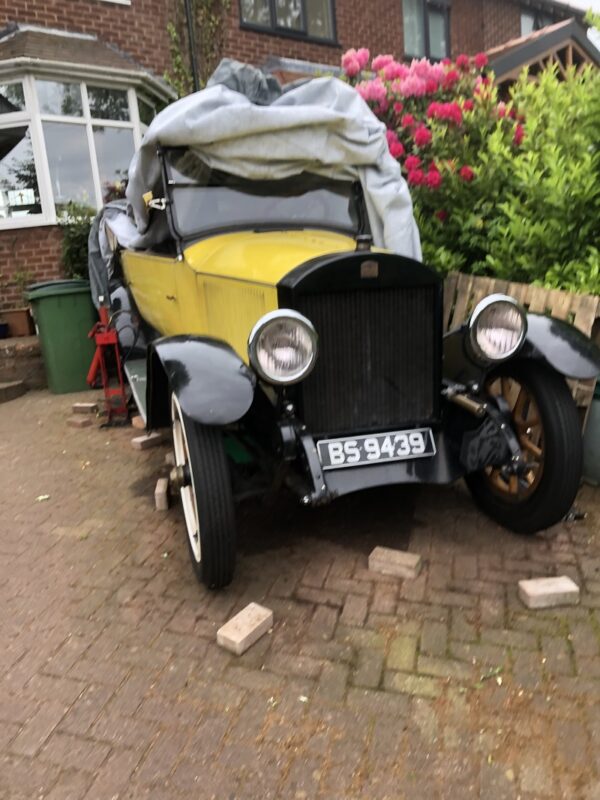
(Sorry about the terrible pun).
All sorts of fascinating cars turn up in the UK, even those from faraway lands. But a Stanley steam car in South Manchester must be a rarity.
This 1919 Stanley 735B was imported from the USA by a leading British steam-car enthusiast and then sold twice – once at auction – until it ended up with the current owner. It is in very good condition for its age, with original interior and mostly original yellow and black paint. The archetypal American headlamps are original, as are the lovely wooden artillery wheels.
The car has been sleeping under a tarpaulin over the winter of 2022/23 while a cracked casting on the all-important water pump eccentric has been repaired. It is now just waiting for a boiler inspection and new certificate, then it will be ready to go for the summer.
Twins Francis E. Stanley (1849–1918) and Freelan O. Stanley (1849–1940) founded the Stanley company, after selling their photographic dry plate business to Eastman Kodak. They made their first car in 1897. During 1898 and 1899, they produced and sold over 200 cars, more than any other U.S. maker.
In 1899, Freelan and his wife Flora drove one of their cars to the top of Mount Washington in New Hampshire, the highest peak in the northeastern United States. The ascent took more than two hours and was notable as being the first time a car had climbed the 7.6 mile-long Mount Washington Carriage Road.
The Stanleys later sold the rights to this early design to Locomobile, and in 1902 they formed their own Stanley Motor Carriage Company.
The engine on this car has two double-acting cylinders, side-by-side and equipped with slide-valves operated by conventional Stephenson’s valve gear. It uses simple expansion (compound operation would re-use exhaust steam from a high-pressure cylinder in a low-pressure cylinder, but that complexity is mostly seen on locomotives and steamships). Drive is transmitted directly by the crankshaft to a rear-mounted differential. The boiler runs at considerable steam pressure, around 650 pounds per square inch (4.5 MPa). A Stanley Steamer set the world record for the fastest mile in a motor car (28.2 seconds) in 1906. This record (127 mph or 204 km/h) was not broken by any car until 1911.
During the mid to late 1910s, the fuel efficiency and power of internal combustion engines improved dramatically. Together with the invention of the electric starter, this led to the decline of the steam car and the inexorable rise of petrol-powered vehicles (and, later, diesels). This late Stanley is an example of the company’s attempt to make its cars look more like an internal combustion machine; the ‘radiator’ is in fact a condenser, which extends the range of the car before the need to refill with water.
Francis Stanley died in 1918 when he steered his car off the road into a woodpile while attempting to avoid farm wagons travelling side by side. After his death, Freelan sold his interests to Prescott Warren. The company further declined, and the factory closed in 1924.
We hope you enjoy the pictures below.
Waking from winter slumber
The dashboard. Conventional instruments, strange instruments and, on the left, a steam pressure gauge reading up to 600 pounds per square inch
A horn? No – a whistle, of course!
A classic American headlight…
… and the maker’s name: Gray & Davis, Boston, Mass.
A fine wooden artillery wheel and Stanley hubcap
Stanley radiator (condenser) badge with exotic horse-drawn chariot
Gabriel Snubber shock absorber. The advertising slogan was “Gabriel Snubbers Rebound Shock Absorbers Take the Bounce out of Motoring”
The boiler, on the passenger side
The boiler on the driver’s side, and lots of pipework
And finally, the family cat taking advantage of a soft tarpaulin. Just wait till that whistle blows…







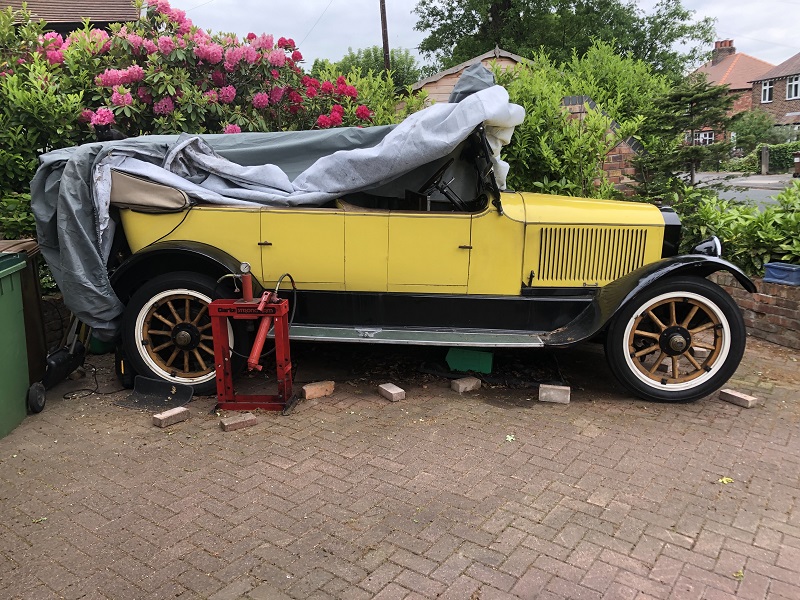
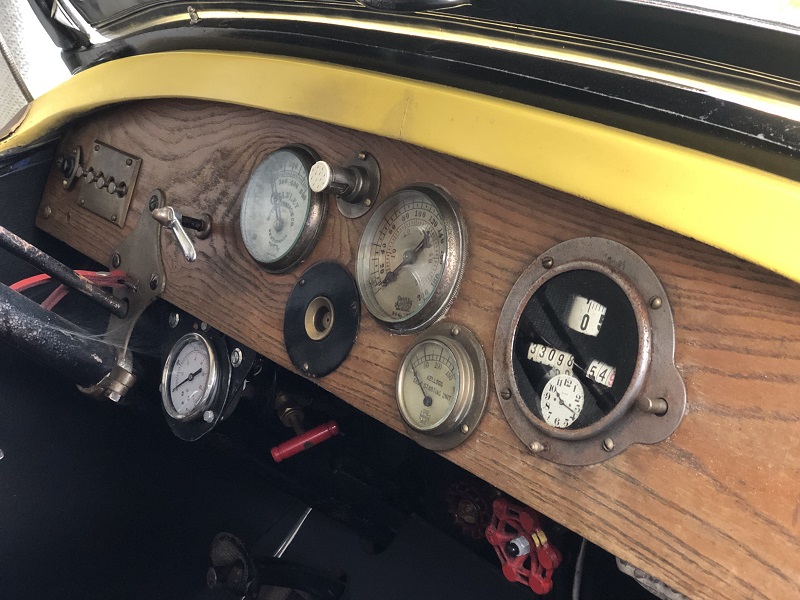
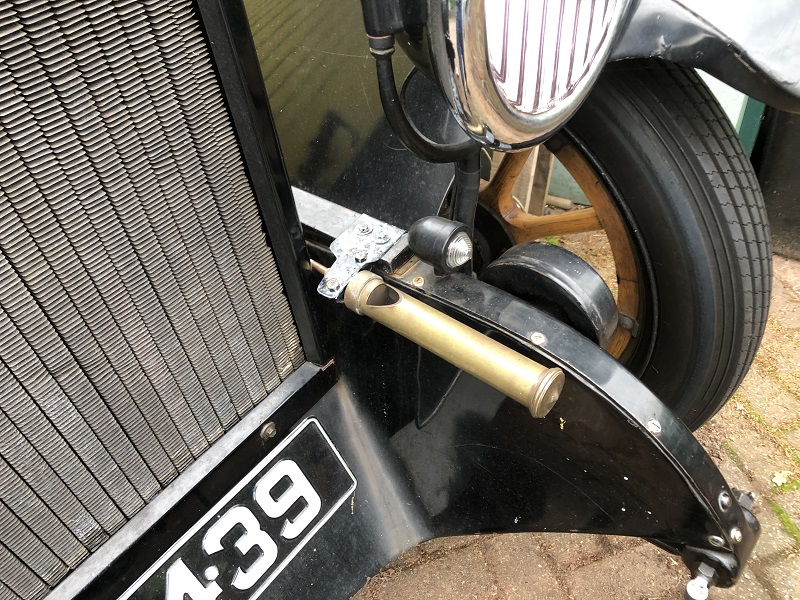
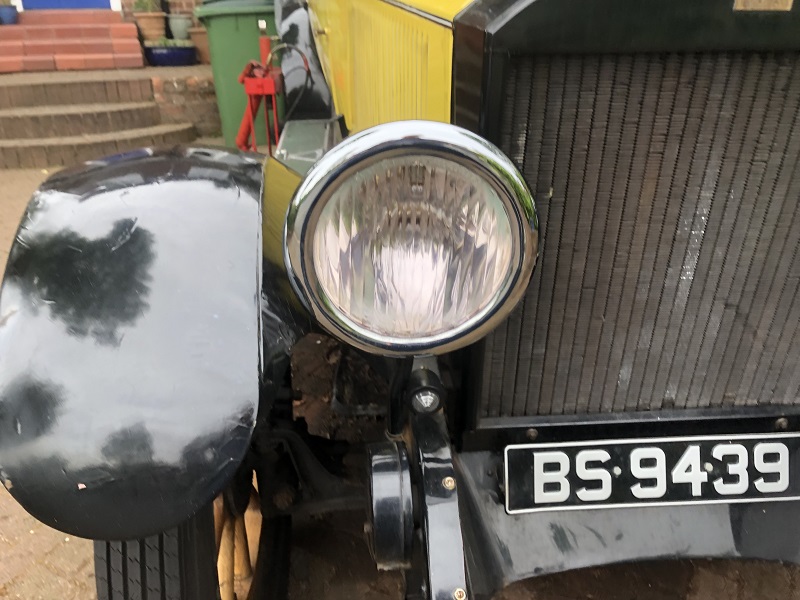
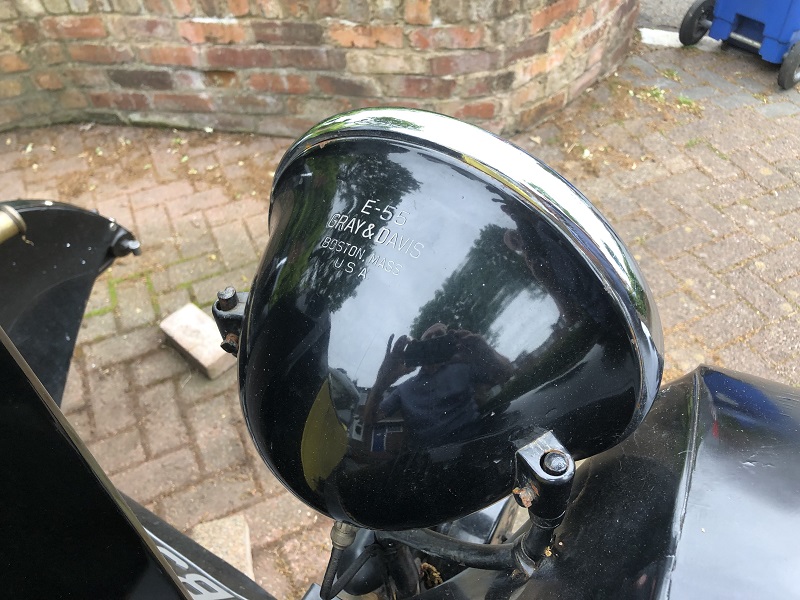
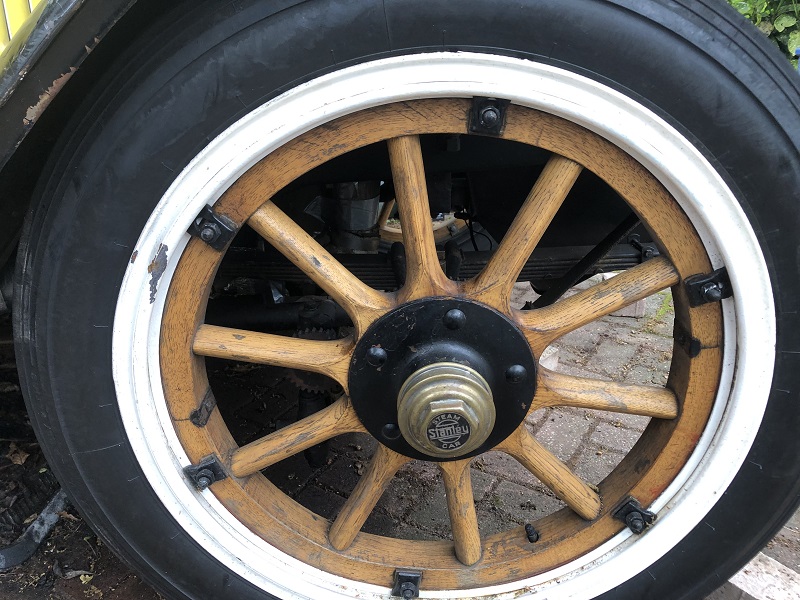
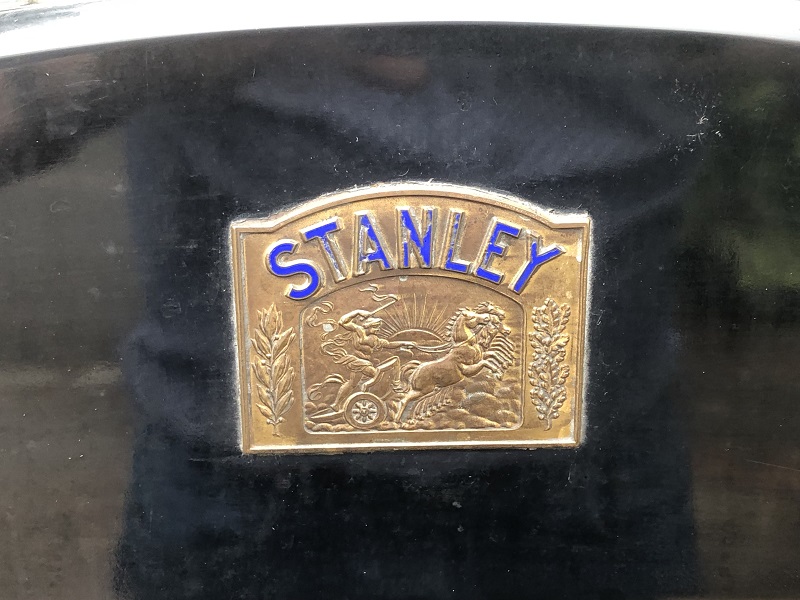
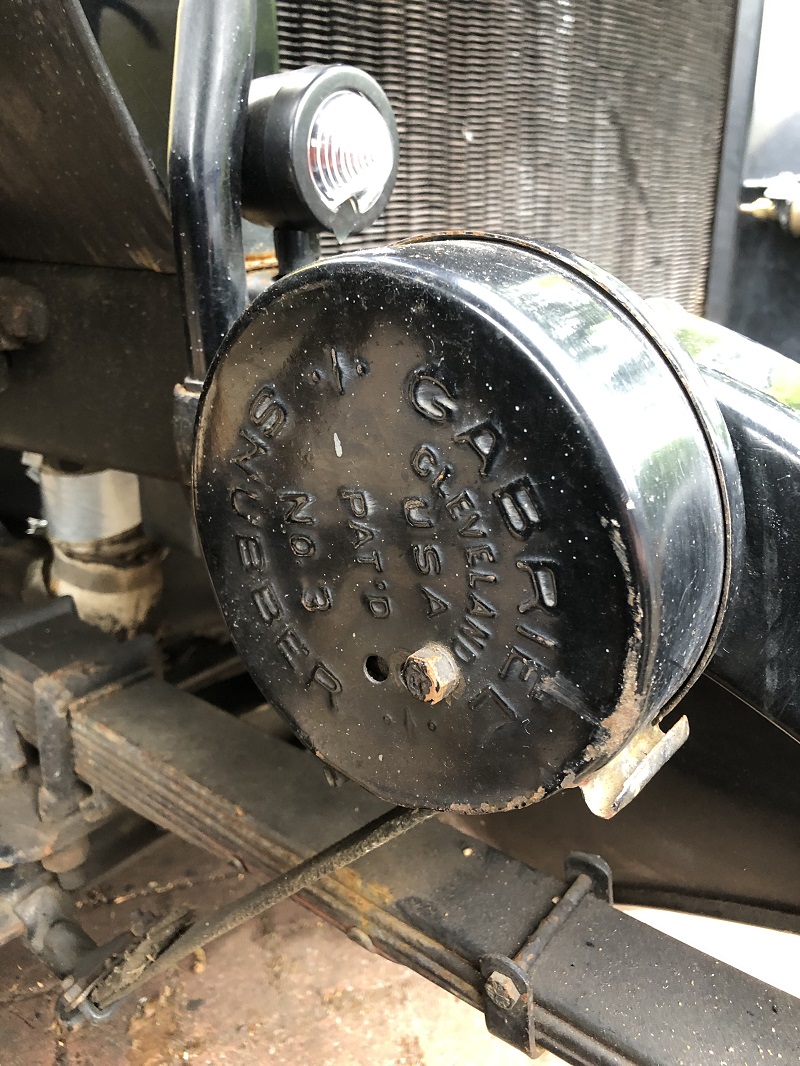
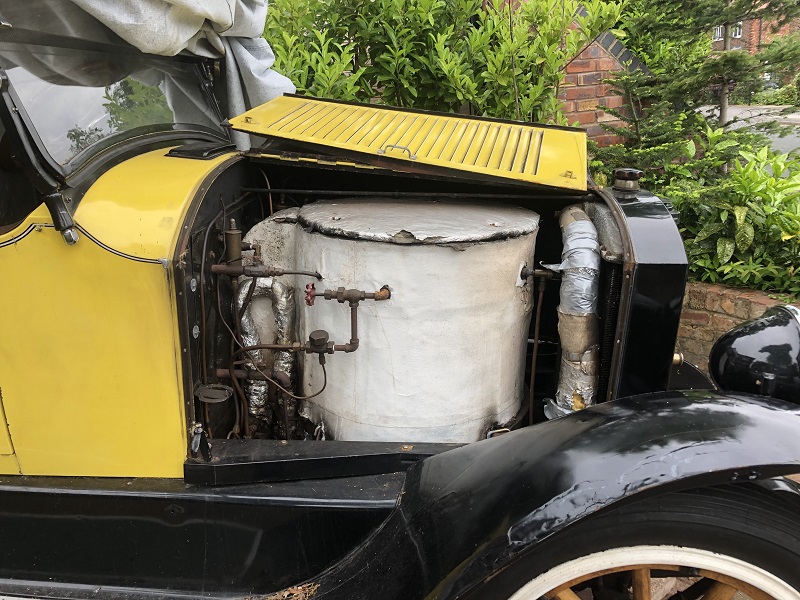
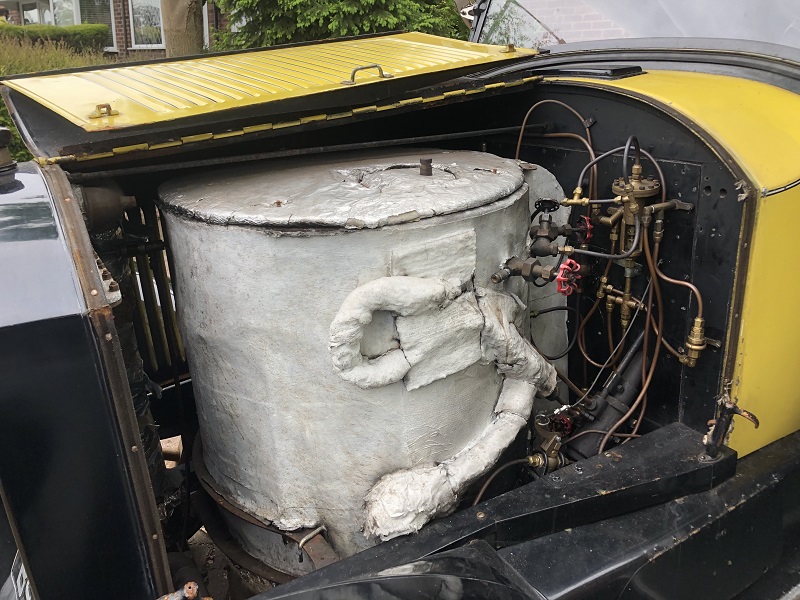

Leave a Comment